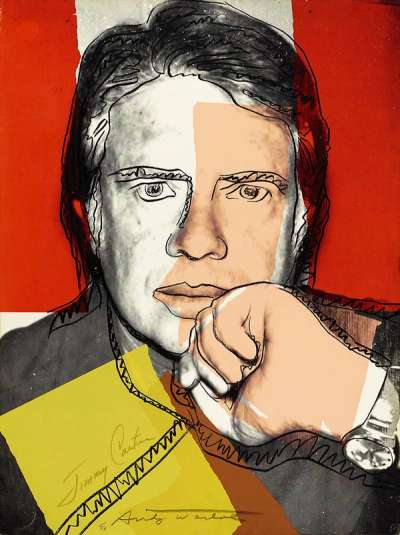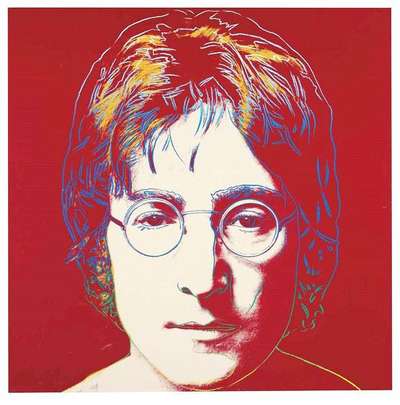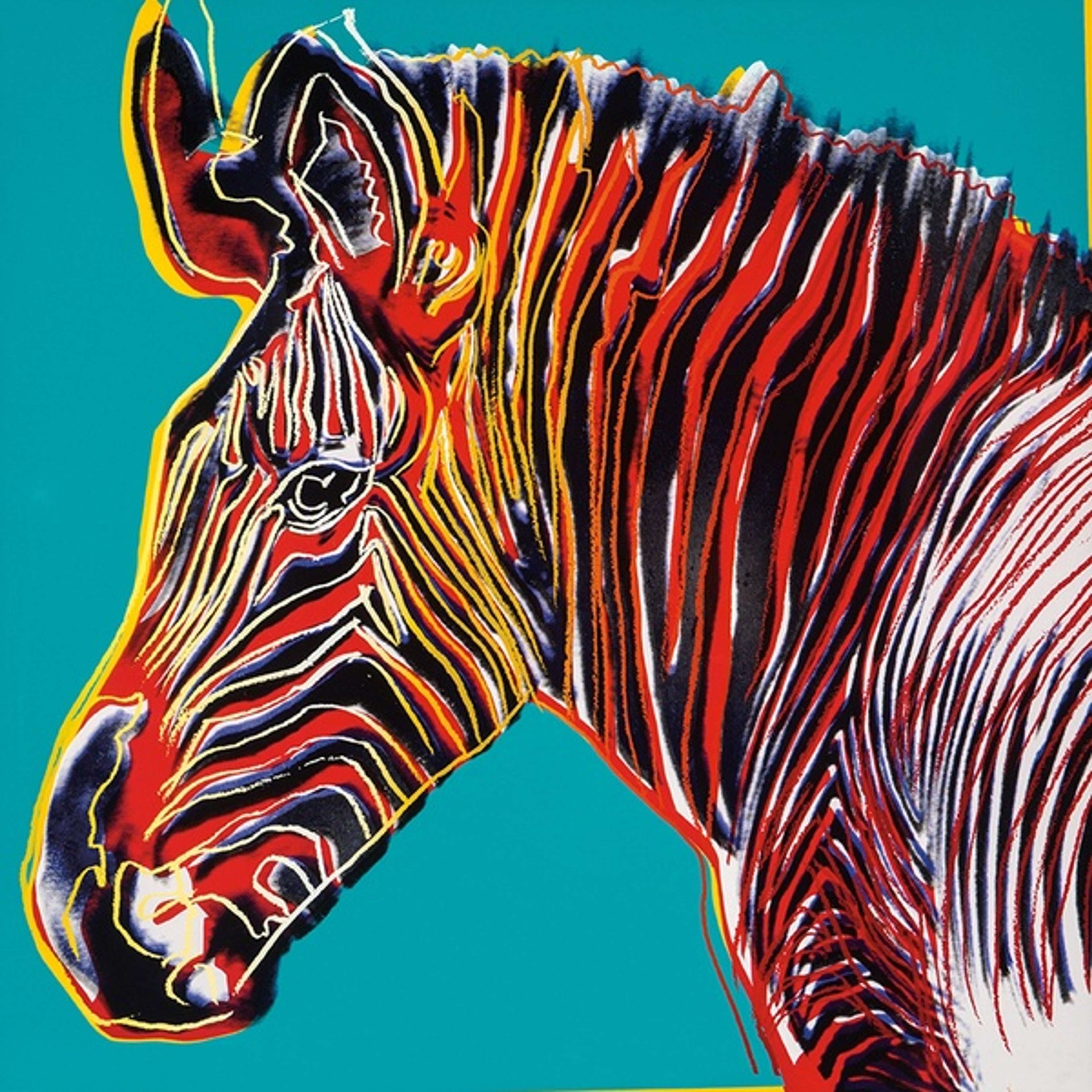Santa Claus as Commodity? Andy Warhol’s Take on Consumerism at Christmas

 Santa Claus (F. & S. II.266) © Andy Warhol 1981
Santa Claus (F. & S. II.266) © Andy Warhol 1981
Andy Warhol
477 works
Key Takeaways
Andy Warhol’s exploration of Santa Claus posits an intriguing commentary on the intersection of tradition and consumerism. By transforming a universally recognised symbol of Christmas into a Pop Art subject, Warhol redefines Santa Claus as more than a cultural icon- he becomes a representation of the commodified ideals driving modern holiday celebrations. Santa Claus (F. & S. II.266) stands alongside Warhol’s famed depictions of consumer goods and celebrities, illustrating the artist’s ability to reveal the deeper implications of mass production and marketing.
Andy Warhol, hailed the “Father of Pop Art”, was a master of elevating the everyday into the realm of fine art. His fascination with consumer culture, celebrity, and the mass production of desire finds an unlikely yet fitting subject in Santa Claus. Through Warhol’s 1981 screenprint Santa Claus (F. & S. II.266), the jovial figure of Christmas is rendered not only as a beloved cultural icon, but also as an emblem of commodification. By placing Santa Claus alongside his iconic portrayals of Campbell’s Soup cans and Marilyn Monroe, Warhol invites us to reconsider the role of the mythical Christmas figure as both a symbol of joy and a tool of consumerist machinery.
Santa Claus as a Marketing Tool
The transformation of Santa Claus into a marketing juggernaut is a tale of cultural alchemy. Originally rooted in the folklore of St. Nicholas, the modern Santa owes much to the influences of 19th-century illustrations and, later, the full embrace of corporate America. By the mid-20th century, Santa had become an omnipresent figure in advertising campaigns, from Coca-Cola commercials to department store promotions. His image was no longer just a seasonal symbol, but a driver of economic activity.
Warhol, always attuned to the power of icons, recognised Santa’s status as one of the most universal and commercialised figures of all time. In Santa Claus (F. & S. II.266), the character is brought to life through Warhol’s signature screenprinting technique, complete with vibrant colours and bold lines. Yet beneath Santa’s warm smile and twinkling eyes lies a critique of his commodification. Warhol’s depiction emphasises not just the festive cheer but also the calculated branding that has turned Santa into a global ambassador for consumer spending.
Repetition, Mass Production, and the Myth of Individuality
Warhol’s work thrives on repetition and mass production, a reflection of the industrial age that shaped his artistic vision. Just as factories churn out identical consumer goods, Warhol’s Factory studio replicated images of celebrities, products, and cultural icons. Santa Claus, in this context, becomes the ultimate subject for Warhol’s exploration of mass production. A ubiquitous figure, endlessly reproduced in advertisements, toys, and decorations, Santa epitomises the interchangeability of symbols in consumer culture.
This approach aligns seamlessly with Warhol’s broader critique of modern life. By reproducing the same image over and over, Warhol strips away the illusion of individuality. Whether it’s a Campbell’s soup can or Santa Claus, the subject becomes a vessel for exploring the collective fantasies that drive consumption. In this light, Santa is not merely a character; he is a product, shaped by the demands of a market economy and sold to billions.
The Commercialisation of Christmas and the Pop Art Connection
Warhol’s fascination with consumerism finds a perfect stage in the commercial spectacle of Christmas. No other holiday encapsulates the intersection of materialism and tradition quite like Christmas, where the celebration of family and spirituality coexists with a relentless drive to shop and spend. Warhol himself understood this duality, as seen in his vibrant Poinsettia series and his early work designing Christmas cards for Tiffany & Co. Yet, Warhol’s relationship with consumer culture wasn’t purely critical, it was also deeply admiring. With his signature straight blonde hair and dark glasses, Warhol became an icon in his own right, embodying the very mechanisms of fame he scrutinised. His fascination with celebrities extended beyond their status as marketing tools; he saw them as embodiments of the dreams and desires of the masses.
In Santa Claus (F. & S. II.266), Warhol bridges the gap between “high art” and popular culture, echoing the very commercialisation he critiques. Pop Art, by its nature, elevates the mundane and commodified into the realm of artistic inquiry. Warhol’s Santa thus embodies both the allure of Christmas magic and the cold reality of its marketing machine. The bright colours and playful lines of the print evoke nostalgia and warmth, but they also highlight the superficiality of a holiday dominated by consumerism.
Santa Claus: Warhol’s Most Universal Subject?
Among Warhol’s pantheon of subjects - Marilyn Monroe, Elvis Presley, Campbell’s Soup - Santa Claus stands out as perhaps the most universal. While Marilyn and Elvis were icons of their time, Santa transcends generations, geographies, and cultures. He is instantly recognisable, a global figure whose myth is as standardised as the products that bear his image. This universality ties directly to Warhol’s philosophy. In his writings, Warhol marveled at the democratising power of consumer goods. A Coca-Cola bottle, he famously observed, is enjoyed by everyone, from the wealthiest elite to the humblest worker. Santa Claus operates on the same principle. He is a shared myth, a character that unites disparate societies through a collective narrative of generosity, wonder, and, inevitably, consumption.
Warhol’s Religious Undertones
While Warhol is best known for his secular explorations of fame and consumerism, his own Byzantine Catholic faith occasionally surfaced in his art. This spiritual dimension adds complexity to his treatment of Christmas. In works like his Last Supper series and Saint Apollina series, Warhol explored themes of faith and salvation. His Santa Claus print, though less overtly religious, carries echoes of this duality. Santa, after all, is a figure tied to the Christian tradition of gift-giving and goodwill. Warhol’s depiction captures this essence while simultaneously critiquing its commodification. In doing so, Warhol merges the sacred and the profane, reflecting a society where spiritual ideals are often co-opted by commercial interests.
The Factory and the Art of Mass Production
Warhol’s Factory was more than a workspace; it was a cultural hub and a microcosm of the industrial age, where art met commerce in ways that were both provocative and groundbreaking. Employing a team of assistants to produce his screenprints, Warhol turned the process of creating art into a mechanised operation, blurring the lines between artist and manufacturer. This production-line approach mirrored the industrial processes that defined modern capitalism, where goods are designed, replicated, and sold en masse. It was a deliberate commentary on the commodification of art and the erosion of individuality in a mass-production society.
Yet, the Factory was not only about production; it was also a stage for New York’s avant-garde scene, a magnet for artists, musicians, writers, and socialites. Figures like Lou Reed, Edie Sedgwick, and Jean-Michel Basquiat were regulars, adding to its mystique as a nexus of creativity and counterculture. The Factory’s social reputation as a space of experimentation and rebellion stood in stark contrast to its mechanised output, reflecting Warhol’s dual fascination with both the creative chaos of human interaction and the structured monotony of industrial replication.
This ethos finds a striking parallel in the mass production of Santa’s image in the commercial world. Like Warhol’s prints, Santa is endlessly reproduced across countless mediums, from plastic figurines to wrapping paper and Christmas cards, and consequently his symbolic meaning is diluted by the sheer volume of iterations. Warhol’s print captures this paradox, presenting Santa as both a cherished cultural figure and a product of the very system that mass-produces his image. In doing so, the Factory’s legacy and the commodification of Christmas converge, illustrating how deeply the mechanisms of production shape cultural icons.
Pop Art’s Legacy: A Mirror to Consumer Culture
Warhol’s Santa Claus embodies the core of his artistic philosophy; to confront the viewer with the familiar and challenge them to see it anew. Santa, a figure synonymous with joy, generosity, and childhood wonder, becomes in Warhol’s hands a multifaceted symbol - part nostalgic icon, part capitalist construct. By placing Santa within the same realm as Campbell’s Soup cans and Marilyn Monroe, Warhol underscores the commodification of even the most sacred cultural symbols, revealing the thin line between tradition and marketing. In Warhol’s hands, Santa becomes a mirror reflecting our collective desires and the systems that exploit them, making Warhol’s critique of consumerism as relevant today as it was in 1981. Through the lens of Pop Art, Santa transcends the realm of holiday kitsch to become a timeless emblem of society’s ongoing negotiation between tradition, identity, and commerce.





























